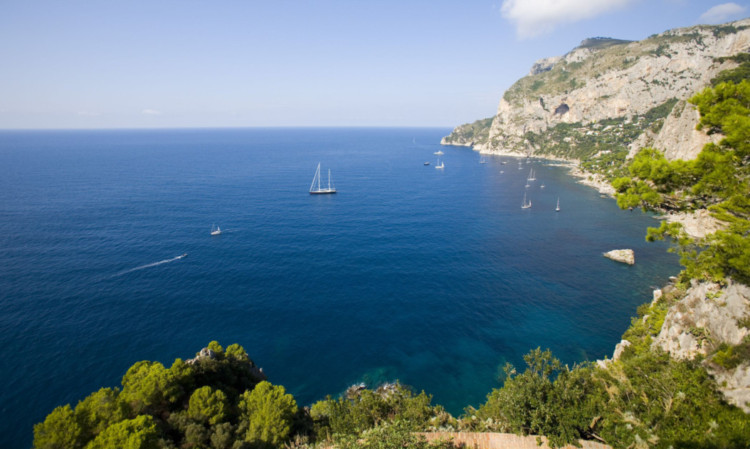
The stunning Italian island is legendary as the home of the mythological sirens.
These beautiful but dangerous creatures were femme fatales who lured sailors to their doom on the island’s precipitous limestone cliffs through their enchanting songs.
No wonder Gracie Fields felt so at home there, and Mariah Carey has a villa there today.
Dame Gracie retired to her villa on Capri in 1939 as she recovered from cervical cancer, and after spending the war in America, lived the remainder of her life in her home La Canzone Del Mare, a swimming and restaurant complex that her house overlooked.
It was a favourite of the Hollywood stars in the 1950s and Gracie would often entertain the likes of Richard Burton and Liz Taylor, Great Garbo and Noel Coward.
She died there in 1979, aged 81, and is buried in Capri’s Protestant Cemetery in a white marble tomb.
Jutting out of the Bay of Naples, Capri became known as a playground of the rich and famous in the years after the Second World War.
That, though, was merely building upon its historical background as the most sought-after location in the area.
Several Roman emperors used the island as a summer escape from the burdens of office, and Tiberius even cheekily moved the imperial capital here.
Now, although you can still bask in luxury there, it’s found a niche as the premier port of call for daytrippers from the mainland.
Dozens of ferries, hydrofoils and other pleasure boats ply their way across the bay from the likes of Sorrento and Naples, disgorging tourists at the Marina Grande.
Many head straight for the Blue Grotto, the finding of which in the 19th century sparked the rediscovery of Capri after it had been largely ignored since Roman times.
The island’s remarkable landscape has attracted writers and artists and more recently, tourists ever since and the British have been particularly taken with Capri.
DH Lawrence and George Bernard Shaw were frequent visitors while Graham Greene followed Gracie’s lead and bought a house there.
Actually staying on the island can be prohibitively expensive if you can find a room in the teeming summer months but don’t worry as you can comfortably “do” Capri in a day.
From the Marina, you can either take the funicular or walk up the hill to the Capri town itself.
If you feel fit, another steep half-hour hike will take you up to the ruins of Tiberius’s villa and the views out over the Bay to Ischia, Procida and beyond are spectacular.
Speaking of which, well worth a look is the Belvedere of Tragara, a high panoramic promenade of exclusive and eyewateringly-expensive villas.
It’s great fun to stroll down it and decide just which of them you’d snap up should those six little Lotto numbers come up.
You’d think with the island’s rich Roman history there’d be more archaeology to see but much of it was destroyed, by us Brits, alas.
When we ousted Napoleon’s troops from Capri in 1806, it was decided to turn the island into a powerful naval base a “Second Gibraltar” as it was termed but the building programme caused damage.
And it was all to no avail, anyway, as we were turfed out by “Old Boney” just three years later.
If Capri feels a little claustrophobic for your tastes, try Ischia instead.
It feels less crowded and its hot springs, plentiful sandy beaches and lush green volcanic interior make it well worth a visit.
There’s also the added bonus of being able to go to the Bay of Naples’ other main tourist attractions, Pompeii and Herculaneum, by ferry from here.
So, Capri can be crowded but utterly lovely and you can see why the great and the good flocked there.

Enjoy the convenience of having The Sunday Post delivered as a digital ePaper straight to your smartphone, tablet or computer.
Subscribe for only £5.49 a month and enjoy all the benefits of the printed paper as a digital replica.
Subscribe